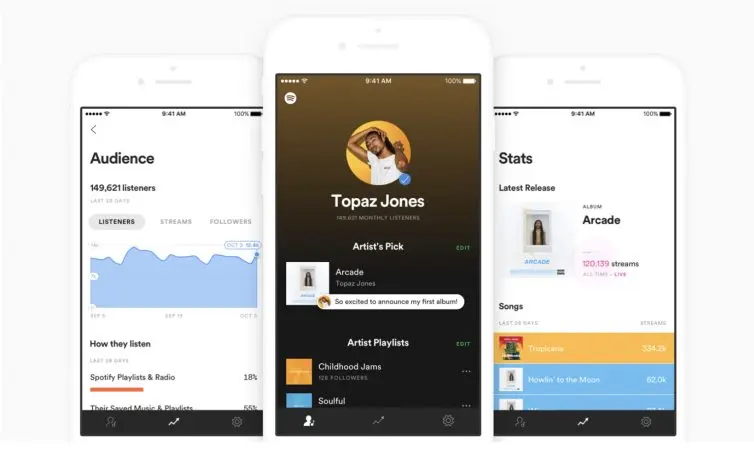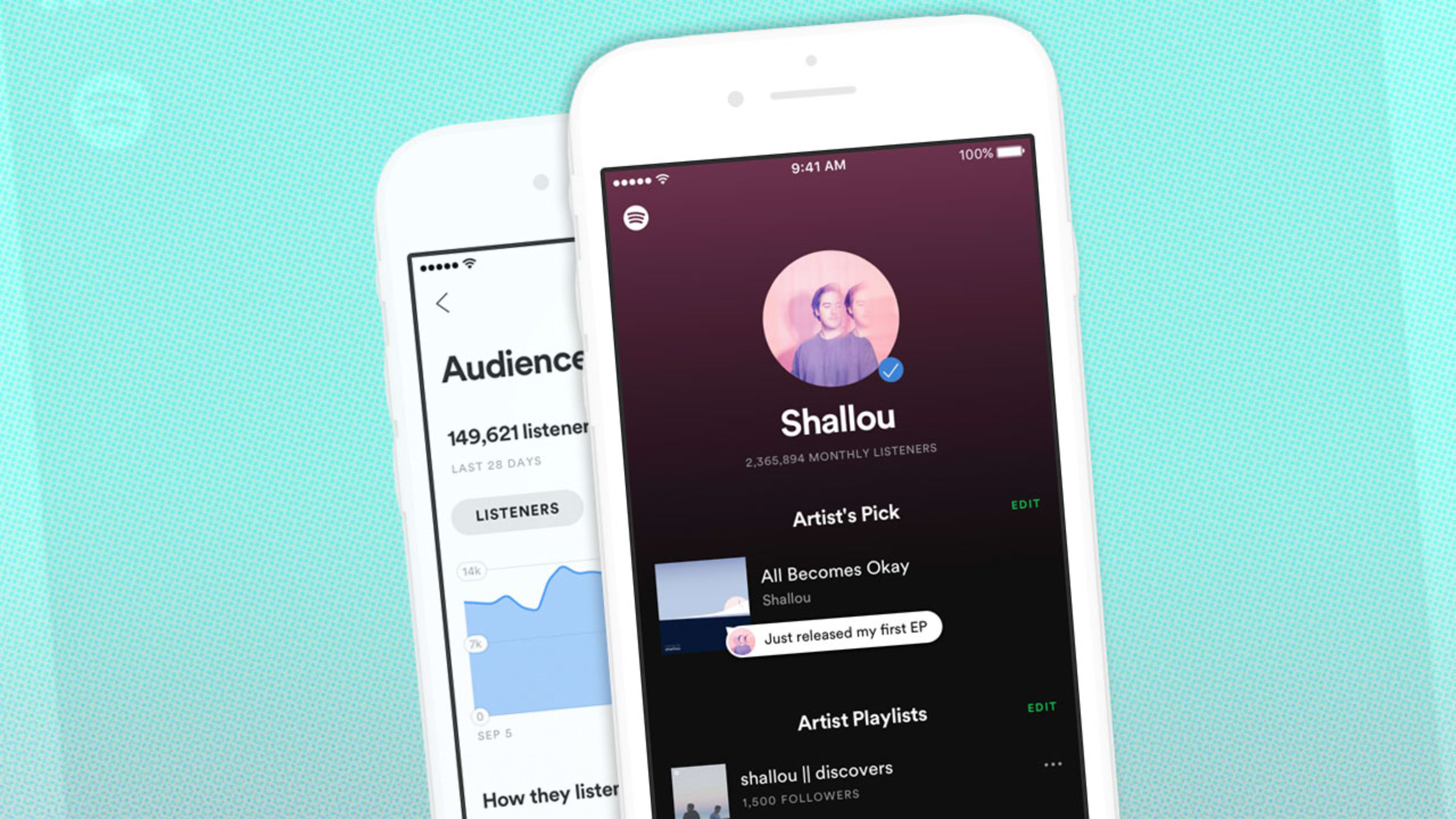Is the streaming era good for musicians? Few things in the industry depend more heavily on whom you ask that question; Major label execs are thrilled to see the first revenue growth in years, but an independent singer-songwriter struggling to fill the tour van gas tank might have a hard time mustering up the same optimism. However you may feel about the way the music industry is evolving, it’s hard to deny the value of one of streaming’s most powerful byproducts: Data. Specifically, the mountains of intel produced by tens of millions of people listening to music every minute of the day.
Spotify knows the potency of this weapon (and is also eager to prove its “good guy” role to skeptical artists) so they’ve been pouring more resources into making its listener data more accessible to creatives. Spotify For Artists is an app launching today that gives musicians and their managers mobile access to super-detailed analytics about their music and the people listening to it.
The Spotify For Artists app takes some of the most useful insights about an artist’s music—which songs are most popular, how many streams they’re getting over all, where those listeners live, and which playlists are helping win over new fans—and boils them down into digestible graphical charts. It’s a bit like Google Analytics for rappers, electronic DJs, pop stars, and the like.
Related: Inside Spotify’s Plan To Win Over Anxious Artists–And Win The Streaming War
This isn’t the first time Spotify has made this kind of data available to musicians and their teams. Spotify For Artists is a product that first launched on the web in April, after a private beta period. First, Spotify opened it up to all artists (the first big, on-demand streaming app of its kind to do so). Now it’s letting them access it on their phones.
Launching a mobile version of a product might seem like an unremarkable no-brainer, but mobile access is especially useful in this case—Most of us are “on the go” for brief portions of our day; musicians are often on the road for months at a time. And as streaming continues to explode, this data will only become more important in the day-to-day lives of artists, especially those who are touring. Not just because mobile access is handy from the tour van, but because the geographic streaming data is often used to help artists and their teams plan tours more effectively.

The app also gives artists some control over their presence on Spotify, allowing them to do things like update their bios, post playlists, and select the “artist’s pick” track that Spotify lets them display on their profiles.
Spotify For Artists is part of a broader effort undertaken by Spotify over the last several months to build more artist-facing tools and launch initiatives designed to empower them. The company also started a program called Fans First, which uses data to detect the most obsessive listeners of a given artist and target them with special offers like pre-sale concert tickets or exclusive merchandise. The company has also been working harder to strengthen its relationships within the music industry and among artists, in part by hiring former Lady Gaga manager Troy Carter.
These efforts come at a pivotal time for Spotify. Not only is the company in the process of exploring a public offering on the U.S. stock market, but it’s facing a barrage of lawsuits over missing royalty payments for some songwriters, a problem it attributes to problems with incomplete meta data around some of the songs in its catalog, but that its harshest critics claim is deliberate copyright infringement. However that litigation pans out, it’s just the latest controversy when it comes to how artists get paid in the streaming era: Many complain that the per-stream royalty rates paid out by streaming services (not just Spotify) are too meager to allow musicians to support themselves.
In theory, the economics for artists should improve as streaming scales (a recent Goldman Sachs report predicted that the music industry will be worth $41 billion by 2030), and, potentially, as new agreements are forged between artists, labels, publishers, and streaming services. In the meantime, Spotify is trying to throw as many bones as it can to hungry artists.
Recognize your brand’s excellence by applying to this year’s Brands That Matter Awards before the early-rate deadline, May 3.
